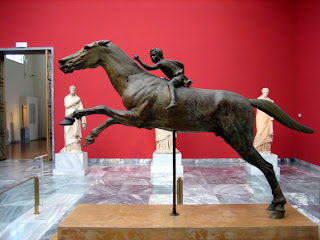MEDIEVAL ART – HIGH MIDDLE AGE
The Medieval Period also called the Middle Ages of Europe history spans from the fall of the Roman Empire in 300 CE to the beginning of the Renaissance in 1400 CE. The Medieval Period is the middle period of the three traditional divisions of Western history: classical antiquity, the medieval period, and the modern period. The Medieval Period is itself subdivided into the Early, High, and Late Middle Ages. There are many art styles in the Medieval Period such as Early Christian, Romanesque, Gothic and others.
The Gothic style developed in the middle of the 12th century and is named after the Goths who ruled France. Primary media in the Gothic period included sculpture, panel painting, stained glass, fresco and illuminated manuscripts. Some contemporaries of the Goths thought the use of figures such as gargoyles was hideous, but Gothic cathedrals represent the most beautiful and timeless accomplishments of the period. For example, Notre Dame Cathedral in Paris has been added to many times since the 12th century, but it still bears important Gothic features such as gargoyles and flying buttresses.
The Virgin and Saint John, from a Cruxificion
1420 CE
During the Gothic period (1100 –1500 CE), stained glass was one of the foremost techniques of painting practiced in Europe. The surfaces of each piece of glass are painted in a wide range of dark tones. One of the most widespread forms of painting, stained glass inspired the lives of the faithful through religious narratives in churches and cloisters, celebrated family and political ties in city halls, and even decorated the windows of private houses.
Seraph (in Reims Cathedral)
By unknown French glass painter
1275 - 1299 CE
Some of the most powerful art produced in the High Middle Ages were stained-glass cycles, or visual stories, in French cathedrals. Among the most famous of these is in Reims Cathedral, from which this arresting lunette (a half moon–shape) originally came. The Seraph, one of the six-winged angels that were thought to stand in the presence of God, is frighteningly formal, with thick strokes of black vitreous paint used to render its commanding eyes and facial features. Vitreous paint is paint that contains tiny glass particles mixed in a liquid.




Comments
Post a Comment